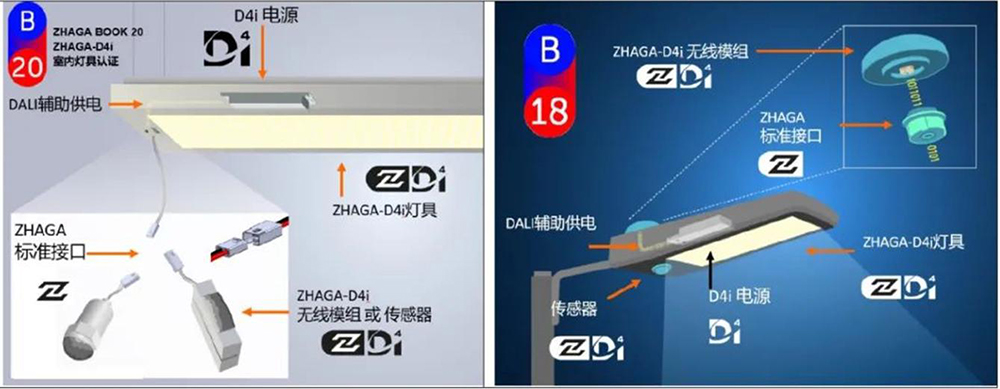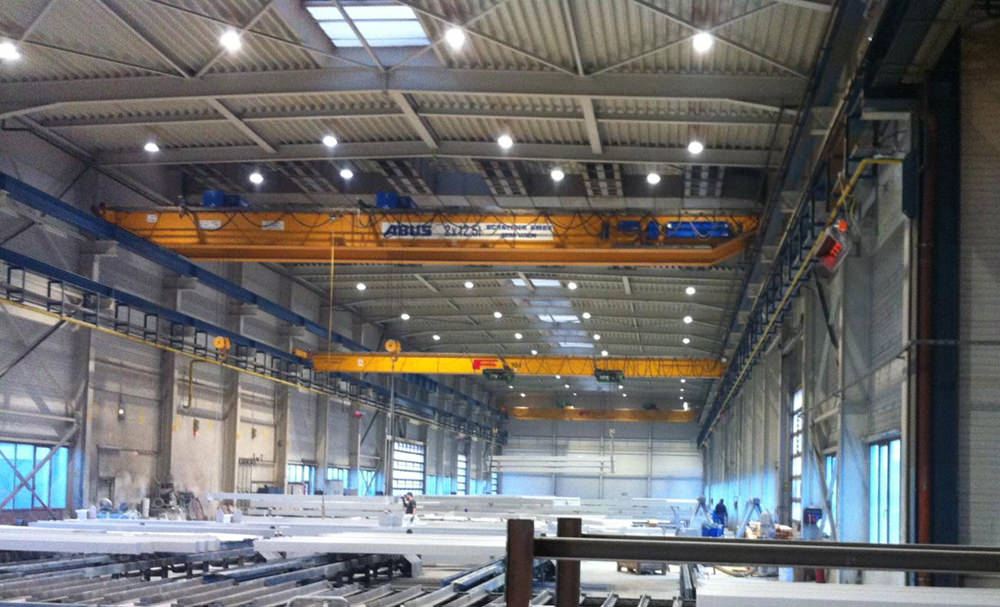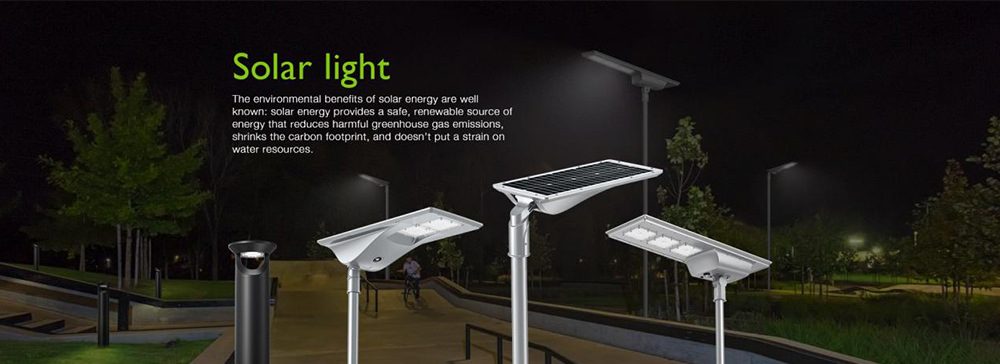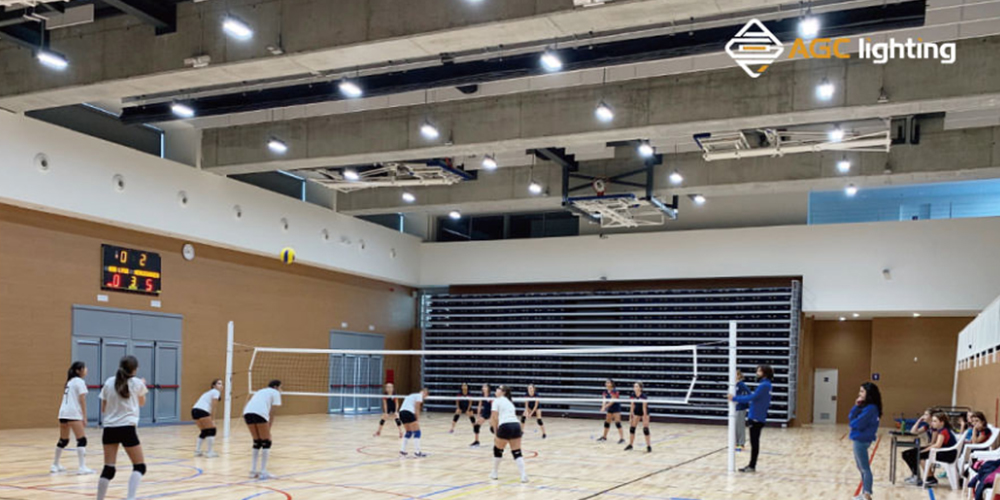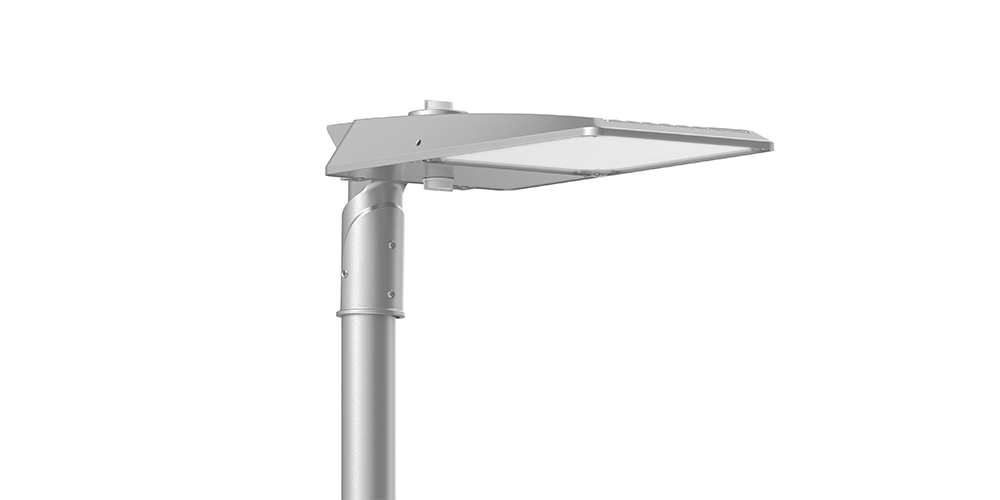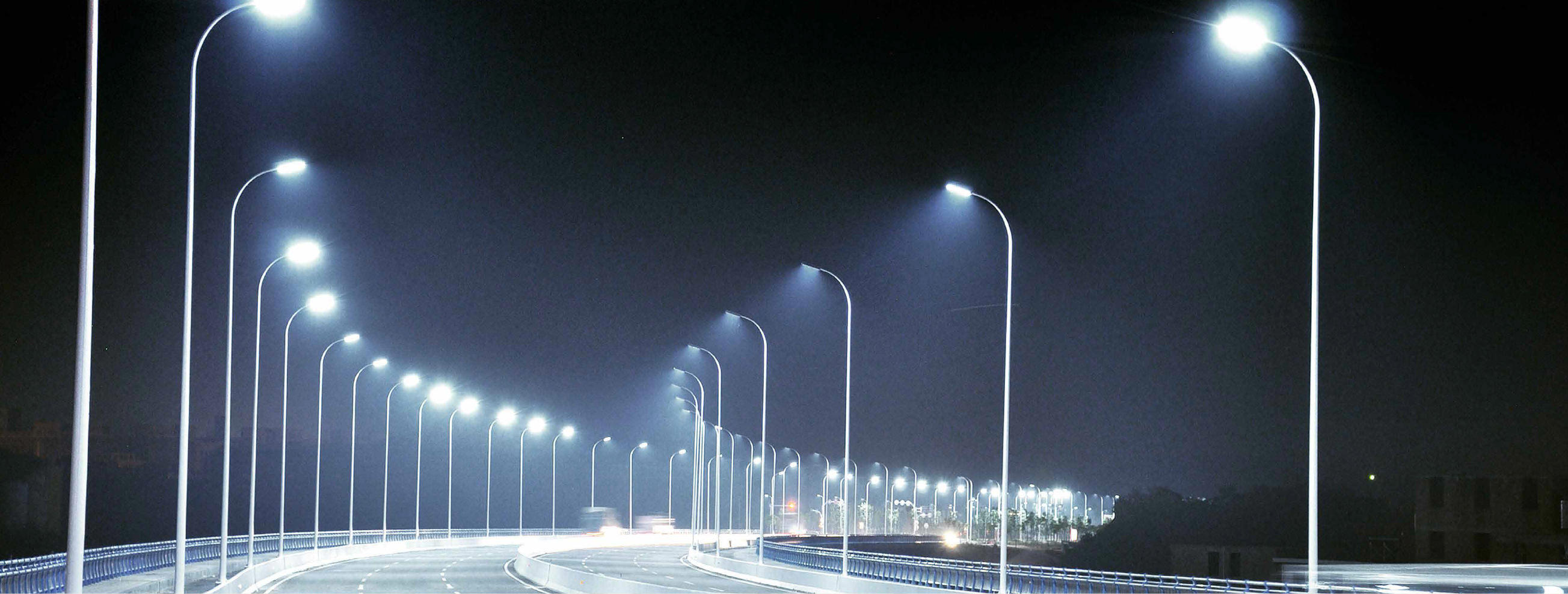
Applying higher visibility is one of the key purpose for outdoor luminaires. A higher and proper lighting can offer a better support for people to recognize the condition and avoid dangerous at night. With safety in mind, use the energy saving and efficient luminaires to create comfortable and aesthetically lighting. Distribution is one of the pivotal factors to evaluate lighting efficiency. Thus, a proper distribution of LED light is important for outdoor luminaires. For street area, we would concern about the safety for both drivers and passerby. Intensity, brightness, glare, lighting coverage and other factors form the distribution of LED light. The distribution type classified by many organizations, whom are aims to choose the most suitable LED light according to different road condition and ensure the safety. This post will introduce the main factors and classification for LED distribution types.
IES Classifications
IES(Illumination Engineering Society), develops the lateral light distribution with regards to the lighted area width described as multiple of the mounting height (MH). The width of the half-maximum candela trace within the longitudinal distribution in distribution range (Short, Medium or Long )is used. The boundaries for each classification in terms of Longitudinal Roadway Lines (LRL, running along the roadway) are as follows:
Lateral Light Distribution
-
Type Ⅰ:
Narrow symmetric patter, half-maximum candela trace falls between 1 MH on the house side and 1 MH on the street side of the luminaire position. It is great for walkways, paths, roadway and “high mast” applications as it is a two-way preferred lateral distribution with width of 15 degrees that illuminate in opposite directions.
-
Type Ⅱ:
Narrow asymmetric pattern, half-maximum candela trace falls between 1 MH and 1.75 MH on the street side of the luminaire position. It is used for walkways, roadways and bike paths. It has a preferred lateral width of 25 degrees for larger lighting areas.
-
Type Ⅲ:
Wide asymmetric pattern, half-maximum candela trace falls between 1.75 MH and 2.75 MH on the street side of the luminaire position. This type of distributions allowing the light to project outward and fill the area with a preferred lateral width of 40 degrees. It is meant for roadway, parking, other area light applications.
-
Type Ⅳ:
Asymmetric forward throw pattern, half-maximum candela trace falls beyond 2.75 MH but less than 3.7 MH on the street side of the luminaire position. It has a preferred lateral width of 60 degrees. Ideal for wall mount or pole mount perimeter applications.
-
Type Ⅴ:
Symmetrical circular pattern, has distribution that is circularly symmetrical around the luminaire position. It provides equal forward and rear lighting distributions. It is best for parking and area lighting.
-
Type VS:
Symmetrical square patter, has a square symmetry of candlepower that is essentially the same at all lateral angles. It is suitable for large areas, like the parking lot and the areas that require sufficient and evenly distributed light.
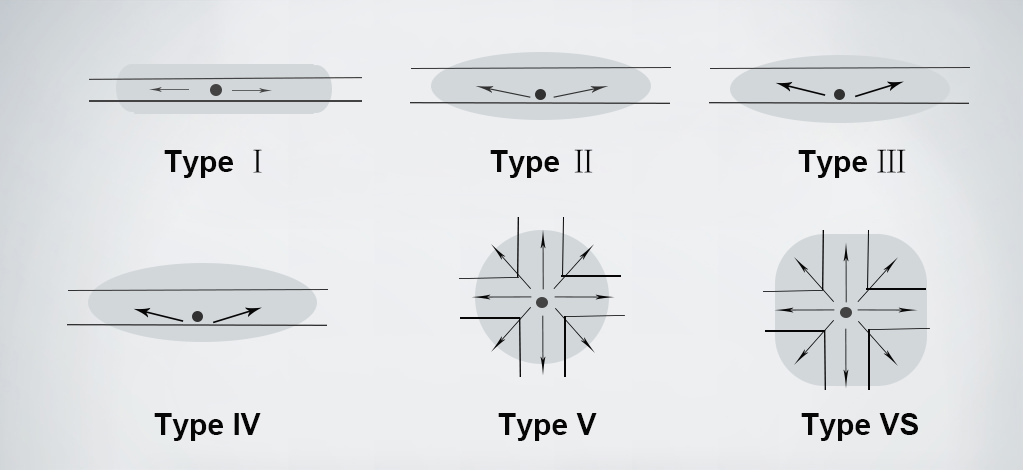
Vertical Light Distribution
In addition to these types, the light distribution can be classified as Short (S), Medium (M), or Long (L). This refers to the luminaire’ s vertical light distribution and is based on where the maximum intensity (candela value) points to in the grid, given in TRL (Transverse Roadway Lines) as a multiple of mounting height (MH). The vertical distribution categories are defined as follows:
- Very short: The maximum intensity points to a very short region of the grid, 0 to 1.0 MH TRL.
- Short: The maximum intensity points to a short region of the grid, 1.0 to 2.25 MH TRL.
- Medium: The maximum intensity point is in the middle of the grid, 2.25 to 3.75 MH TRL
- Long: Maximum intensity points to a point in the long region of the grid, 3.75 to 6.0 MH TRL
- Very long: Maximum intensity points to a very long region of the grid, over 6.0 MH TRL.
Cutoff Optics
The amount of glare produced by a luminaire is greatly influenced by intensity emitted at angles close to the horizontal. Glares and the light emission are dangerous for drivers. The more evenly light is, the more comfortable drivers would feel. So it is necessary to regulate the cutoff classification, which is base on the influence of light on glare at 80 degrees to 90 degrees vertical angle.
-
Non-Cutoff
A luminaire light distribution without intensity limitation.
-
Semi-Cutoff
A luminaire light distribution that the intensity does not exceed 20% of the rated light at 80 degrees vertical angle from above nadir, and the intensity must not exceed 5% of the rated light lumens at 90 degrees from nadir. This is applicable to all lateral angles around the luminaire.
-
Cutoff
A luminaire light distribution that the intensity does not exceed 2.5% at or above 90 degrees of the rated lamp lumens from nadir, and the intensity must be less than 10% of the rated light lumens at 80 degrees vertical angle above nadir.
-
Full Cutoff
A luminaire light distribution that the intensity is zero above 90 degrees from nadir, which means the light will only hit the ground below. And the intensity must not exceed 10% of the rated light lumens at or above 80 degrees. This is applicable to all lateral angles around the luminaire.
There is a vedio about LED light distribution of street light as follow. Hope it can help you have a better understanding.
BUG Rating
“BUG” refers to an outdoor luminaire’s distribution and light pollution potential, “B”for back light, “U” for light directed upward above the horizontal plane of the luminaire, “G” for glare (high angle forward light). BUG rating evaluates the optical performance of lighting trespass, sky glow and high angle brightness. The stray light is divided in to subzones as different angles.
Backlight:
- Backlight Very High (BVH): 80-90 degrees
- Backlight High (BH): 60-80 degrees
- Backlight Medium (BM): 30-60 degrees
- Backlight Low (BL): 0-30 degrees
Uplight
- Uplight High (UH): 100-180 degrees
- Uplight Low (UL): 90-100 degrees
Glare:
- Forward Light Very High (FVH): 80-90 degrees
- Forward Light High (FH): 60-80 degrees
- Forward Light Medium (FM): 30-60 degrees
- Forward Light Low (FL): 0-30 degrees
BUG rating is calculated from 0-5 rating per category, “0” is the minimum spill lumens while “5” is the maximum spill lumens.

CIE Classification
CIE (International Commission on Illumination), a no-for-profit, non-government commission, is dedicated to increase lighting efficiency, lower energy consumption and pollution. CIE classified the distribution by lighting projection and cutoff optics.
Lighting Projection
According to the maximum luminosity of 90% of the central axis of the luminaire and the range covered by the vertical irradiation of the luminaire to the road, the distribution of light is divided into Narrow, Medium and Wide.
- Narrow: The angle formed by 90% of the maximum intensity of the lamp irradiated to the ground and the vertical line of the lamp is less than 45 degrees.
- Medium: The angle formed by 90% of the maximum intensity of the lamp irradiated to the ground and the vertical line of the lamp is between 45 degrees to 55 degrees.
- Wide: The angle formed by 90% of the maximum intensity of the lamp irradiated to the ground and the vertical line of the lamp exceeds 55 degrees.
Cutoff Optics
-
Full Cutoff:
The direction of maximum lighting intensity is between zero degrees to 65 degrees. The maximum lighting intensity must be less than 10cd/1000lm at 90 degrees and less than 30cd/1000lm at 80 degrees.
-
Semi-Cutoff:
The direction of maximum lighting intensity is between zero degrees to 75 degrees. The maximum lighting intensity must not exceed 50cd/1000lm at 90 degrees and less than 100cd/1000lm at 80 degrees.
-
Non-Cutoff:
The maximum lighting intensity is 1000cd at 90 degrees.
NEMA Classification
NEMA(National Electric Manufactures Association), develop the light distribution classification, which is used primarily for flood lighting and sport lighting fixtures. It describes the distribution of light within the beam produced by the fixture.
-
Type 1:
The beam spread is 10 degrees to 18 degrees, described as “Very Narrow” with projection distance of 240 ft or greater.
-
Type 2:
The beam spread angle is larger than 18 degrees but less than 29 degrees, described as “Narrow” with projection distance between 200 to 240 ft.
-
Type 3:
The beam spread angle exceeds 29 degrees but lower than 46 degrees, described as “Medium Narrow” with projection distance from 175 ft to 200ft.
-
Type 4:
The beam spread angle is 47 degrees to 70 degrees, described as “Medium” with projection distance from 145 ft to 175 ft.
-
Type 5:
The beam spread angle is over 70 degrees and lower than 100 degrees, described as “Medium Wide” with projection distance from 105 ft to 145 ft.
-
Type 6:
The beam spread angle is higher than 100 degrees and less than 130 degrees, described as “ Wide” with projection distance from 80ft to 105 ft.
-
Type 7:
The beam spread angle beyond 130 degrees, described as “ Very Wide” with projection distance under 80ft.
NEMA indicates the horizontal and vertical beam spread angles of the flood light. If a flood light is of 50 degrees horizontal beam spread and 50 degrees vertical beam spread, the NEMA type is 4 X 4. Different flood distributions provide more accurate solutions for multiplex applications.
The street lights would light up when it comes to dark. The lights bright the road to help us have a clearer visibility. But the street lights are not placed randomly. To provide security and appreciate brightness for passerby and drivers, they are designed carefully according to the length, width and the brightness needs of the road. With the raised awareness of environment protection, people gaining a higher demand for light quality. Thus, more attentions are paid on lighting pollution. There are strict requirement of street lights on lighting angles and coverage to protect people around from disturbing as over brightness that would be harmful to eyes. All classifications and regulations of the street lights and area lights are aimed to ensure the safety for both people and environment. Careful selection of lighting distribution will help the visual environment be evenly illuminated, with luminaires distributed widely at low enough angles to prevent over-brightening and glare and increase visibility and security.
Need lighting solution with customized lighting distributions? Contact us!



